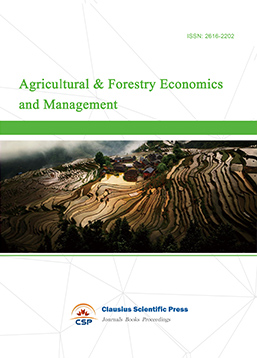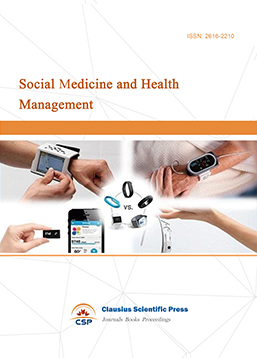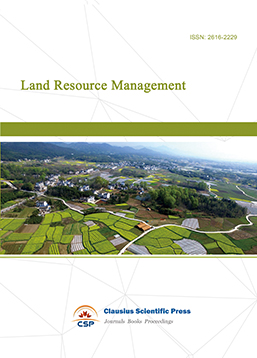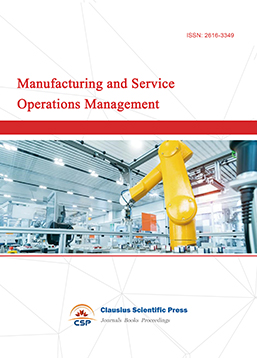Estimation of Green Innovation Capability in the Yellow River Basin: A Case Study of Shandong Province
DOI: 10.23977/ieim.2024.070202 | Downloads: 4 | Views: 108
Author(s)
Yingqi Li 1, Shuo Yang 1, Yawei Xue 1
Affiliation(s)
1 School of Management Engineering, Qingdao University of Technology, Qingdao, Shandong, China
Corresponding Author
Yawei XueABSTRACT
Promoting green innovation capability is of great significance to China's realization of green economic power and green innovation power. Based on the perspective of economic development, this paper establishes a comprehensive evaluation system for improving regional green innovation capability from 19 indicators in five aspects, including green innovation input, green innovation output, green development, talent development and utilization, and economic benefits, and uses the entropy weight TOPSIS method to estimate the green innovation capability of Shandong Province from 2012 to 2022. On this basis, the European distance method is used to identify the key influencing factors. The results show that the overall green innovation capability of Shandong Province is on the rise, but the speed of green innovation capability improvement is slightly lower than the speed of green innovation input; Under the average level of green innovation during the sample period, green innovation input, green innovation output, green development, and talent development and utilization have promoting effects on the improvement of green innovation ability, but the economic benefits fail to meet the requirements of promoting green innovation ability.
KEYWORDS
Improving green innovation capability; Economic perspective; Entropy weight TOPSIS; Euclidean distanceCITE THIS PAPER
Yingqi Li, Shuo Yang, Yawei Xue, Estimation of Green Innovation Capability in the Yellow River Basin: A Case Study of Shandong Province. Industrial Engineering and Innovation Management (2024) Vol. 7: 6-16. DOI: http://dx.doi.org/10.23977/ieim.2024.070202.
REFERENCES
[1] Gao shan, Analysis of spatial-temporal evolution and influencing factors of green technology innovation capability in urban agglomeration in the middle reaches of the Yellow River [D]. Shanxi university of finance and economics, 2023. DOI: 10.27283 /, dc nki. GSXCC. 2023.001280.
[2] ZHAO Shaofei, Zhao Xin, Chen Xiang. Evaluation of regional industrial green technology innovation capability based on improved closeness value method [J]. Industrial Technical Economics, 2020, 39(07):152-160. (in Chinese)
[3] Fang Chengwu, Liang Yingping, Wu Fan, et al. Based on the performance of green technology innovation ability evaluation study [J]. Journal of nanyang institute of technology, 2020, 12 (5): 27-32. DOI: 10.16827 / j.carol carroll nki. 41-1404 / z. 2020.05.005.
[4] Bai Mingguo, Fu Yinglu, Yao Yuting. Urban green innovation ability evaluation research in anhui province [J]. Journal of innovation of science and technology, 2021, 21 (02): 49-57, DOI: 10.19345 / j.carol carroll XKJ. 1671-0037.2021.02.006.
[5] Ye Chenyi, Huang Can, Wang Shang, et al. Evaluation of green innovation capability and environmental driving factors of industrial enterprises in Beijing-Tianjin-Hebei [J]. Business Research, 2022, 29(06):36-49.
[6] Chen Songyi. High technology industry innovation ability evaluation index system of green building and measure [J]. Journal of statistics and decision, 2023, 33 (3) 6:174-178. The DOI: 10.13546 / j.carol carroll nki tjyjc. 2023.03.032.
[7] Cheng L. Spatial evaluation method of coordinated development of regional environmental economy [D]. Tianjin Normal University, 2016. (in Chinese)
[8] Zhang Zhi-Ying, Yue Yuan-xi. Spatial econometric analysis of the relationship between green innovation and regional economic growth [J]. Special Zone Economy, 2019,(08):101-103.
[9] Chen Guoqing, Fang Ziqiang, Long Yunan. Empirical study on the relationship between green innovation and economic development in Sichuan Province: Based on grey correlation analysis [J]. Economic Perspective, 2020, (05):81-89.
[10] Ou Lingyan. Green technology innovation's influence on the regional economic growth research [D]. Nanjing university of science and technology, 2020. The DOI: 10.27241 /, dc nki. Gnjgu. 2020.000730.
[11] Wang Wei. The Chinese provincial green innovation and coupling of digital economy development research [D]. Zhejiang industry and commerce university, 2021. The DOI: 10.27462 /, dc nki. GHZHC. 2021.000772.
[12] Wang Shuai. Influence on the development of the digital economy of regional green study [D]. Lanzhou university, 2022. The DOI: 10.27204 /, dc nki. Glzhu. 2022.003664.
[13] Wei Shiwei, Du Jinmin, Pan Shuang. Digital economy how to promote green innovation -- empirical evidence from Chinese city [J]. Journal of business review, 2022, (11): 10 to 20. The DOI: 10.13762 / j.carol carroll nki CJLC. 20220308.001.
[14] Wang Fayuan, He Zhili, Zhang Dongqing. Environmental protection, green technology innovation and high-quality economic development: An empirical analysis based on the data of the Yangtze River Economic Belt from 2005 to 2019 [J]. Yangtze River Basin Economic Research, 2022,(01):91-111.
[15] Zhai Renxiang, Shi Zheyu. Whether green technology innovation can improve energy efficiency: A case study of China's coastal areas [J]. Ocean development and management, 2022, 33 (4): 6-49. 43 DOI: 10.20016 / j.carol carroll nki hykfygl. 20220330.015.
[16] Gu Huidong, Yang Weiguang, Chen Wenjie. Study on the effect of green technology innovation on urban carbon emission reduction [J]. Academic Exploration, 2022,(03):120-132.
[17] Luo Chengyu. Regional differences and influencing factors of green innovation capability in China [D]. Xi 'an University of Technology, 2019.
[18] Li Dapeng. Urban agglomeration in the middle reach of Yangtze river green innovation ability of space and time characteristics and influencing factors of research [D]. Hunan normal university, 2021. The DOI: 10.27137 /, dc nki. Ghusu. 2021.002306.
| Downloads: | 12686 |
|---|---|
| Visits: | 286879 |
Sponsors, Associates, and Links
-
Information Systems and Economics

-
Accounting, Auditing and Finance

-
Tourism Management and Technology Economy

-
Journal of Computational and Financial Econometrics

-
Financial Engineering and Risk Management

-
Accounting and Corporate Management

-
Social Security and Administration Management

-
Population, Resources & Environmental Economics

-
Statistics & Quantitative Economics

-
Agricultural & Forestry Economics and Management

-
Social Medicine and Health Management

-
Land Resource Management

-
Information, Library and Archival Science

-
Journal of Human Resource Development

-
Manufacturing and Service Operations Management

-
Operational Research and Cybernetics


 Download as PDF
Download as PDF